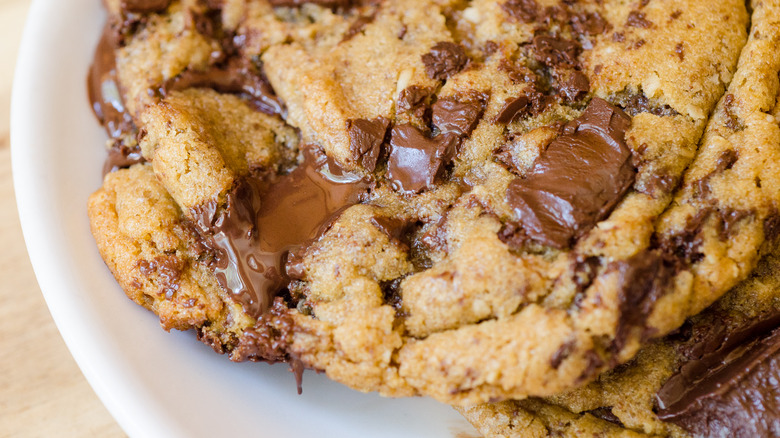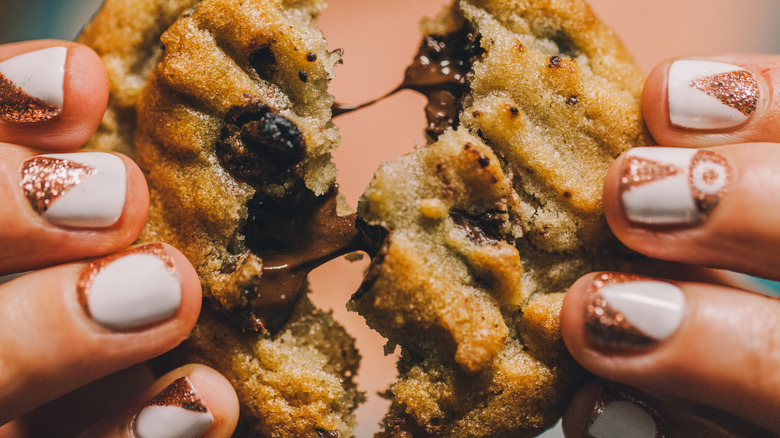Resting Your Cookie Dough Will Lead To A Deliciously Chewy Texture
Cookie texture can be a divisive topic. Everyone has a favorite. Some people like crispy. Others prefer a chewy texture. If you are Team Chewy, then your approach to the baking process must be modified to ensure you get the texture you desire. This includes adding one essential step before your cookies even make it to the oven — resting your dough. It is one of the most important things you need to do to get that oh-so-desirable chewy texture.
Admittedly, the "science" behind resting your cookie dough sounds sketchy and may be a result of false information being passed around the internet. For example, some cookie recipes instruct you to wrap cookie dough and place it in the fridge so it loses moisture. However, according to the USDA, wrapping items before placing them in the fridge is how you prevent dehydration. So what's really happening when you let cookie dough rest in the fridge before baking?
When you wrap cookie dough and place it in the fridge, it doesn't dehydrate. The moisture inside the dough actually hydrates the dry ingredients, leading to a more even overall texture and a well-rounded flavor. It also results in a firmer dough (not dried-out) that becomes chewy (not crispy) when cooked.
Other ways to keep your cookie chewy
Resting the dough is essential to getting the best results if you want chewy cookies. However, it is not the only thing you can do to get the texture you seek. There are several cookie-making tips that can help.
Chewy cookies depend on the recipe. If the ingredient list calls for brown sugar instead of white sugar, then you are headed in the right direction. Brown sugar retains moisture better than white sugar. Also, look for recipes that include shortening. Not only does shortening have more fat, which retains water, but it also has a higher melting point. This helps your cookies stay thicker and chewier.
If you prefer not to mess around with ingredients, there is a very simple way to make any type of cookie chewy: shorten the baking time. The trick here is experimentation and gradual refinement. If the recipe calls for 12 minutes of baking at 375 degrees Fahrenheit, don't immediately drop to seven minutes. Start at 11. If that's not ideal, then try 10. Also, be sure to remove the cookies from the baking sheet as soon as they are set and stable enough to transfer to your cooling racks. The longer the cookies stay on the baking sheet, the more they will cook and the crispier they will become.

